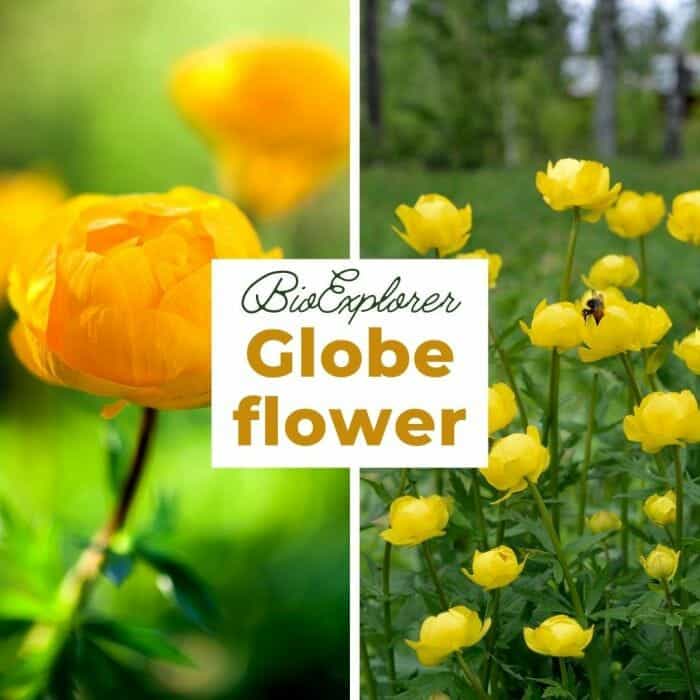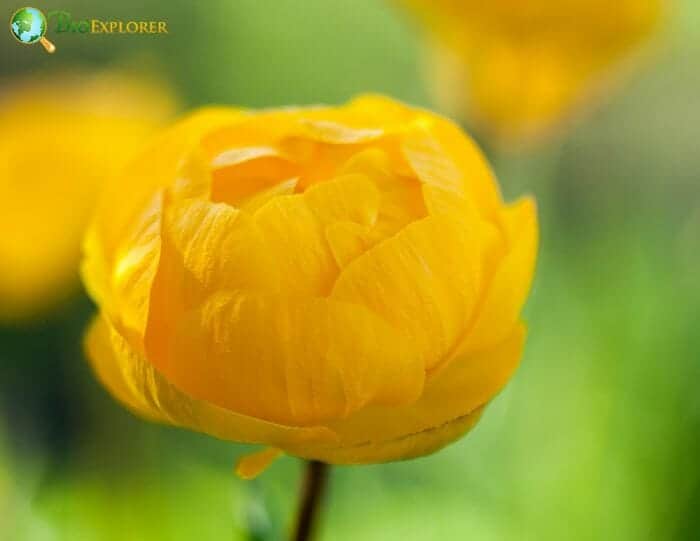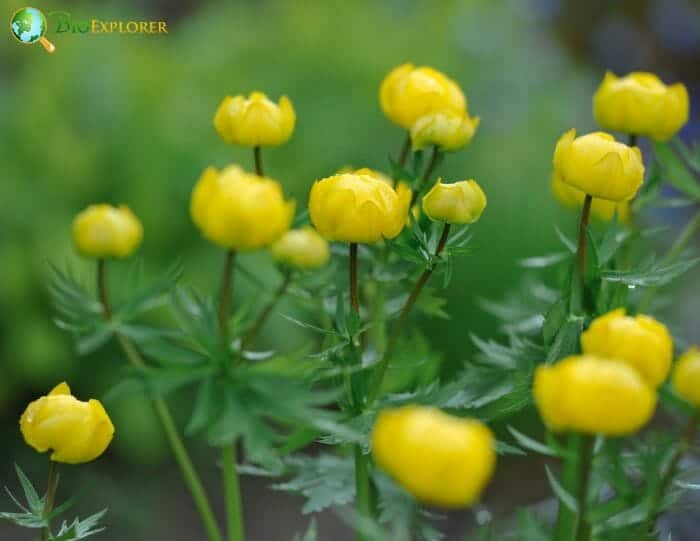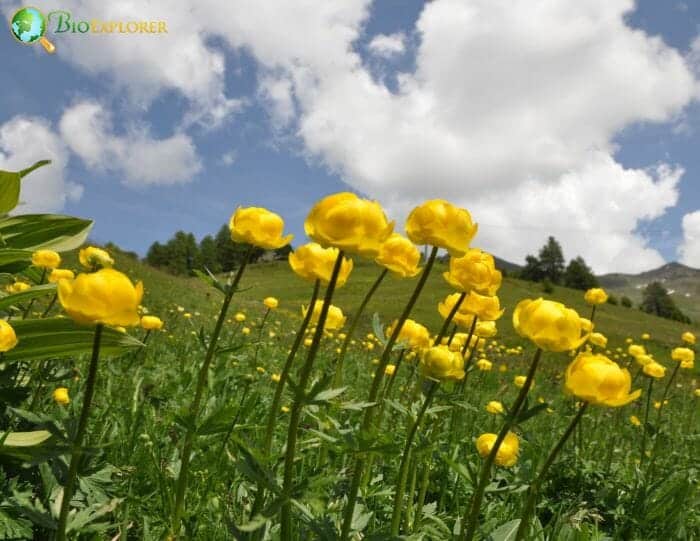
Globeflowers (Trollius europaeus) look awesome next to streams, ponds, and lakes like ranunculus on steroids. These flowers are easy to grow and produce numerous blooms in early summer and late spring.

In addition to their beautiful appearance, Globeflowers are also valuable as food for starving pollinators such as butterflies and bees. It is native to wet grasslands, wet open forests, stream banks, wet grasses, and scrub areas of western Asia and northern Europe.

Globeflowers, commonly referred to as European globeflower or common globeflower, is a perennial herbaceous plant in the Ranunculaceae family (buttercup) that forms clusters and exhibits yellow spherical flowers from late spring to early summer on sparse-stemmed leaves that grow up to 18-24″ in height.

There are around 20 species[1] of herbaceous plants that make up the Trollius genus. The long-stemmed hand-shaped basal leaves (up to 4-6 inches long) are grouped into 3 to 5 deeply ovate, serrated lobes.
The smallest sessile stem leaves have 3 egg-shaped lobes. Branched or unbranched stems arise in late spring from the base of the basal cluster of foliage with spherical flowers (1-2″ in diameter), each forming a ring of 10 to 15 conspicuous, bright yellow petal-shaped sepals, surrounding 5 petals. The flowers typically appear singly but often in pairs.











